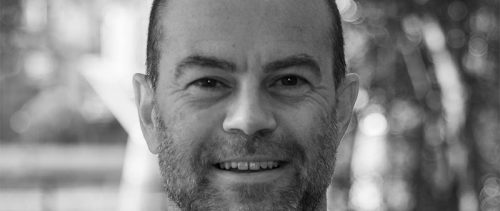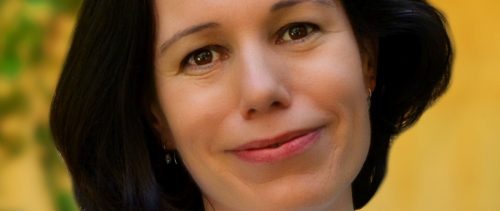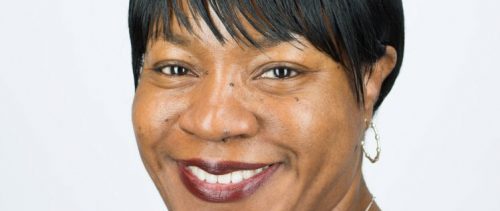- The Expert View
WHAT IS DIVERSITY AND INCLUSION?
Inclusion and diversity often go hand in hand, but they are different from one another. We’ve asked thought leaders and industry experts for their views and for their definitions of these two aspects in the context of today’s modern society.More Questions
We asked the industry experts...
What is diversity and inclusion?

Stephen Frost
Founder and CEO of Included
Diversity is a reality; inclusion is a choice.™Know more about Stephen Frost →
Diversity refers to the mix of individuals, whereas inclusion is about making sure that this mix works. While diversity is a more social and ethical imperative, inclusion is about you – the dominant group – adapting to new circumstances and new people, to create an environment with a sense of acceptance, respect, and belonging. Ultimately, diversity without inclusion doesn't work.
Diversity and inclusion don't have to be things we do just because we have to. They don't have to be things we do just because we should. They become things we do because we want to.

Monika Hamori
Associate Professor of Human Resource Management at IE Business School
Organisations with effective diversity and inclusion practices are characterised by three things:Know more about Monika Hamori →
Firstly, the different (racial, ethnic, and gender) minority groups working at the organisation are represented in higher-level positions to a similar extent as their representation in the organisation’s entry-level positions.
Secondly, employees belonging to these minority groups receive similar career rewards such as pay, bonus, or promotions for an equal amount of input (effort, performance, qualification, etc.); that is, there are no wage or promotion gaps between minority and majority groups.
Finally, in organisations that do well in terms of diversity and inclusion, minorities have a pleasant experience in the workplace; they are not excluded or devalued.

Tahmid Chowdhury
Policy Programme Manager and Diversity & Inclusion Coach
Diversity is about difference. It is what gives us such a rich set of different perspectives, views and experiences between us as human beings.Know more about Tahmid Chowdhury →
Our modern world is more interconnected than ever before. We have seen a shift towards greater rights for women, ethnic minorities, disabled and LGBTQIA+ individuals, as well as many other minority groups.
The discussion about diversity is to make the most of the increasing participation of these groups. In the meritocratic, progressive societies we live in, we want to ensure that we are making use of the skills, experiences, and best talent of people from any background.

Sergey Gorbatov
Professor of HR & Organisational Behaviour at IE Business School
There is a well-known analogy that diversity is being invited to a party, and inclusion is being asked to dance.Know more about Sergey Gorbatov →
It's a definition of diversity and inclusion that I like. Diversity is all the ways we differ; inclusion is valuing those differences. Choose your definition wisely: it determines your actions. For example, if your definition is informed by a compliance framework, you would build a different strategy than if your definition reflects your business strategy. If your customer base is 70% women or your primary market is China, you might reflect that diversity in your employee base.
In general, the broader the definition, the more difficult it is to operationalise. Getting the percentages of female representation in management is easy. Collecting data on the number of single parents or LGBTQIA+ employees is not. I favour a broad definition of diversity, despite the operational challenges. And with that comes a growing responsibility to ensure a culture of inclusion, so each individual can thrive.

Suki Sandhu OBE
Founder, CEO, Board Member, Philanthropist
Holding the core values of diversity and inclusion at the heart of corporate culture is a key to business success. Both diversity and inclusion go hand in hand, and it is important to understand how they come together within our businesses.Know more about Suki Sandhu OBE →
Diversity explores who is sat at the table, whether that is at boardroom level or throughout the business. It requires us to respect people and ensure they have the opportunity to succeed, understand the valuable qualities and differences they have, and appreciate the varying dynamics of our identities. To nurture diversity, it is important to ensure the workplace is a safe, positive environment for people to share their thoughts and come together collaboratively. Welcoming this into a company with sincerity means understanding and embracing that the community of people we find ourselves in is a rich tapestry of creative and passionate people from various walks of life – all striving to uplift the workplace that brings them together.
Inclusion is true belonging. It is underpinned by practical action such as policy implementation, practical changes to facilities, and providing ongoing support to actively create an inclusive environment for all employees. For individuals joining a company, seeing that an employer has made a sincere commitment to ensuring inclusive values will make them feel reassured that the company is well-rounded, and has its values aligned with a healthy and tolerant society.
Businesses that weave diversity and inclusion together, while also understanding that this landscape is constantly evolving, are those that will be actively creating workplaces where everyone can succeed as their authentic selves.

Ragil Ratnam
Educator, Leadership Advisor, Keynote Speaker
When we talk about diversity and inclusion in a business context, we tend to refer to a set of strategies and policies that organisations implement to measure and promote acceptance of differences in a range of common demographic criteria. This often focuses on gender, race, and physical ability. In fact, diversity refers to all types of human differences, from these more obvious characteristics, through age, religion, sexual orientation, skill sets, education, and personality.Know more about Ragil Ratnam →
In some countries, the movement toward diversity in the workplace began as a necessity in response to legal requirements, and in others due to social pressure from historically disadvantaged groups. However, over the last two decades, as companies have started placing more importance on these issues, they have found significant business benefits to incorporating diversity and inclusion in their standard operating procedure and their business strategies.
The reason diversity and inclusion are highlighted together is that, while the first aspect – diversity – acknowledges acceptance of difference, it requires inclusion to move from acceptance to truly valuing what diversity brings to the table. True workplace inclusion requires a respectful, supportive and collaborative work environment that promotes proactive participation and contribution by all staff. As such, diversity and inclusion can be defined as acknowledging, accepting, and embracing the differences inherent in human beings – and leveraging these to create better and happier workplaces for more people, and so drive business performance.

Flooris Van Der Walt
Author, Executive, Mindset Transformational Coach
Diversity and inclusion to me are the realisation that your perspective is not the best, last or only view that matters. To have an open mind, heart, and will to accommodate others and their perspectives into your viewpoint constitutes diversity and inclusion.Know more about Flooris Van der Walt →
This also means that the person who embraces diversity and inclusion has to feel very secure in themselves, so as not to defend, project, or ignore the perspectives of others.

Fiona Daniel
Founder, CEO, Non-Exec Director
There are so many definitions, but diversity is simply difference and inclusion is the ability through what we say and what we do to be open and accepting of the difference and the value add it can bring.Know more about Fiona Daniel →
Related Questions
ASK OUR EXPERTS
Headspring is a joint venture between the Financial Times and IE Business School established in 2015. Our highly influential FT journalists deliver a unique perspective on the events that shape the world of business, and our IE faculty brings an entrepreneurial mindset with a sharper edge and greater impact through technological immersion and a culture of innovation.